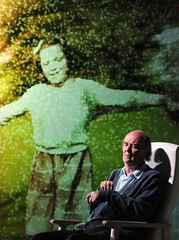Here’s another new example of a apparently fruitful collaboration between art and biomedicine – an opera called The Lion’s Face exploring Altzheimer’s disease and dementia. This time even with a public engagement with science twist. As Felicity Callard – who were involved in the production of the opera, and who just advertised it on the Neuroscience and Society mailing list – describes:
Fundamental to the development of the opera was the sustained involvement of patients, healthcare staff, family members, as well as basic & clinical researchers. The librettist & composer visited the biomarkers labs, talked extensively to the various stakeholders and witnessed various practices of dementia care.
The opera premiered at the Brighton Festival in May 2010, and will come to the Linbury Studio at the Royal Opera House, London in July 2010. The opera explores the lifeworlds and current research practices surrounding Alzheimer’s disease, and opens up a variety of questions vis-a-vis how aesthetic projects engage with social scientists, scientists and other stakeholders in the development of creative work that explores biomedical research and practices.

This event seems increadibly interesting (from my point of view investigating neuroscience and concepts of aging), and I certainly wish I was going to London this summer so I could experience it.
It’s not only that it appearently is really good science communication in the sense of communicating the experience and important aspects of a dreaded disease – see Dementia opera so realistic it could be used as teaching aid for medical students – but also that it shows the potential of art as a interactive medium for both public engagement with science and science engagement with public. Which, by the way, is just what I think the ideal medical museum should be!


